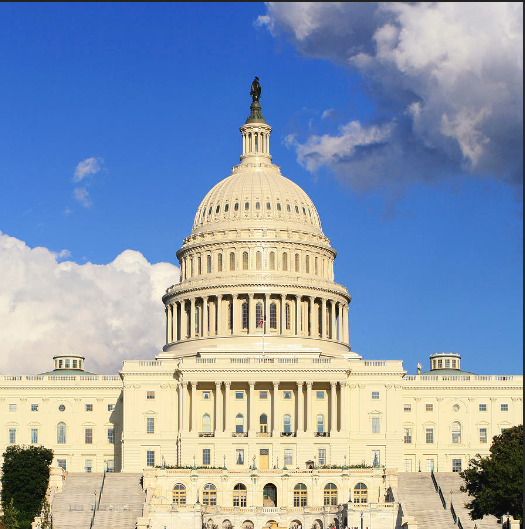Blog Layout
Predicting What a Post-Coronavirus Workforce Will Look Like

Not surprisingly, over the past year, I have been routinely asked for my thoughts on the future of work once we "move past" the coronavirus. While I don't have a definitive answer, I have some pieces of workforce development that I know will factor in any planning that I would do if I controlled the universe. I've also been reaching out to people in other systems to ask their thoughts about what uplifts and what worries them. Here are some thoughts I've been working through as we look forward to a "post-coronavirus" workforce:
The workforce was struggling before the pandemic
Before COVID-19, more than 30 million people had skill levels in literacy or math (or both) that limited their opportunity to either professionally advance or find stable work. We also knew, pre-coronavirus that the transition to automation will not stop—it may slow down but it will not stop. This meant that workers would be presented with challenges in the labor market. Unfortunately, we also took manufacturing out of the cities and moved it to suburban office & business parks, where we built housing, but did not build light rails or expand bus services so that people could hold their current manufacturing job or accept work there. As cars became more essential, the money went toward building more and more highways, but the labor market did not receive the same level of investment. Further exacerbating this problem is that suburbs competed with cities for tax revenue, job growth, educational excellence, Federal support for infrastructure, education, housing and more.
The pandemic shuttered thousands of businesses and ended millions of jobs—some permanently
Thousands of businesses have closed because of the pandemic and, while there is no doubt we have spirited entrepreneurs who will help us rebuild the small business community, millions of U.S. workers have no employer to go back to. We must utilize the data available to better understand gaps in digital illiteracy, labor force participation, and how we can re-skill the large numbers of women and people of color who were forced to leave the workforce due to the pandemic.
We need Congress to appropriate enough money to achieve the levels of skill development we need and to fund those moving toward the path of automation. The challenges, both of job loss and job growth for automation, are here now and we have the data and the expertise to anticipate where and when. But workforce development remains woefully underfunded.
Where we can be hopeful
While I do not believe the federal government can solve all problems, I do believe that good federal policy and strong relationships can allow those communities who want to address workforce issues the opportunity to do so. For example:
- We can work toward removing barriers in federal grant programs by requiring multiple agency review panels so that economic development and workforce development grants get reviewed from both perspectives.
- We can recognize that the incumbent worker–young or more mature–needs physical and financial access to skilling/re-skilling programs and identify pathways toward accomplishing this goal.
- We can educate agencies to understand that job creation is not one-dimensional. We must ensure job creation also includes the individual's ability to achieve self-sufficiency in wages, access and enrollment in childcare and early education programs, transportation, and affordable/adequate housing.
Building back better is more than infrastructure or adding jobs. It's building back communities–which includes ALL pieces of the community. Workforce development professionals and economic development professionals have a unique opportunity and responsibility to collaborate more than ever before, and local elected officials need to utilize this expertise equally, allowing both to be a part of decision-making in the nearly $25 billion local governments spend annually on advancing economic sustainability in their area. NAWB is calling on Congress to appropriate $90 billion and recognize the need for solutions to be governed locally; NAWB believes strongly in local business-led workforce development boards whose membership also includes leadership from local government, education, labor and the community.
The challenge is we face is not simply erasing a skills gap, it is in how we choose to respect ourselves and our neighbors by supporting funding and resources for workforce development. If we can overcome this challenge, we can be the America we think we are.
NOTE: NAWB is encouraged to see the scope of the Biden Administration’s American Jobs Plan and will continue to encourage Congress to keep in mind the pieces that make communities whole, all pieces that should receive consideration in the final legislation.

By Stacy Heit
•
12 Dec, 2023
NAWB responded to the latest WIOA reauthorization proposal on Dec. 12, 2023, in a letter addressed to the chair and ranking member of the House Education and the Workforce Committee. Read the full letter below. Dear Chair Foxx and Ranking Member Scott, On behalf of the National Association of Workforce Boards (NAWB), representing more than 590 state and local workforce development boards (WDBs) across the nation, I am writing in response to the committee’s recent introduction and consideration of H.R. 6655, A Stronger Workforce for America Act (ASWA) to outline our organization’s reservations regarding core aspects of this draft proposal as well as to highlight other, more encouraging, elements of the legislation that we believe would have a positive impact on WDB operations and the wider publicly funded workforce system. Reauthorization of the Workforce Innovation and Opportunity Act (WIOA) is of critical importance to our organization and our members, particularly at a time of significant change in the wider economy and labor markets. Updating the primary federal investment in WIOA provides Congress an important opportunity to make changes to this legislation to ensure that workers, learners, and employers have a system that is nimble, flexible, and responsive to their needs. As ASWA continues to advance through the legislative process, we look forward to working with you as you and your colleagues further refine and build upon this draft proposal using the recommendations and perspectives outlined throughout this letter. NAWB shares your desire to get more training out of the publicly funded workforce system. However, we strenuously disagree with the proposed strategy contained in ASWA—a narrowly defined federal training mandate—to achieve this vision for the future. Such a mandate is at odds with the state and local governance structure that has long been a hallmark of the primary federal investment in workforce development. Congress has long empowered states and local entities to deliver the programs and services authorized by WIOA due to their proximity to the people being served. State and local WDBs’ understanding of the unique employment needs of the diverse communities they serve is necessary to effectively meet the challenges facing individuals with barriers to employment. A federal mandate, however, removes agency from states and local entities to do this in ways that make sense for their communities, regardless of the actual needs of the populations that must be prioritized by the publicly funded workforce system. As you know, the populations that are most frequently served by WIOA face some of the greatest barriers to finding and obtaining family-sustaining employment. These populations are not often in a position to immediately enter into education and skills development programs without significant wraparound services and supports to ensure their success. The proposed mandate’s structure does not acknowledge this important reality and has the potential for many unintended consequences that are likely at odds with this stated core goal of ASWA. This is especially true because the mandate proposed in this draft legislation is narrowly defined and does not allow for the provision of supports to ensure participant success. If enacted as currently constructed, this mandate has the potential to prevent individuals that need help from WIOA the most from accessing the supportive services and resources they need to be successful in education and skills development experiences that lead to better opportunities for themselves and their families. Put more plainly—while well intentioned, the currently proposed training mandate does not adequately address the need to provide the supports necessary to ensure participant success. Non-completion of mandated levels of training will not help workers nor does it help employers seeking to meet their talent needs. NAWB is also concerned that these challenges would be exacerbated by the proposed funding levels contained in the legislation. While we are appreciative of the new funding from H-1B visa fees envisioned in this legislation for Individual Training Accounts (ITAs) to address the requirements of the proposed training mandate, these funds are variable on an annual basis and are likely to ebb and flow each year based on changes to policy contexts that are difficult to predict. In addition, ASWA proposes only modest increases in authorized appropriations for Title I funding despite historic levels of underinvestment and disinvestment in WIOA and predecessor legislation over the past several decades—the primary reason why current levels of training provided by the WIOA system remain so low. ASWA also increases the allowable percentage of funding that can be reserved by the Governor to 25 percent of all WIOA Title I formula funding, including for the creation of a Critical Industry Skills fund. While we are appreciative that LWDBs are eligible applicants for some of these funds, these changes will further reduce the resources available at the local level to deliver training services newly mandated by ASWA. NAWB agrees that providing upskilling opportunities for workers is an important employment strategy for states which is why we have consistently called for greater local flexibility to make this a reality for more workers. As currently structured, however, ASWA would allow other federal funds, including the Governor’s existing 15 percent reserve funding, to be used to meet the state matching requirement for the creation of such an initiative. This will further reduce the ability of the federal investment to leverage additional state funding for training and employment opportunities for individuals. We therefore recommend that this matching requirement be narrowed to only allow nonfederal state funding to fulfill this requirement or eliminated entirely. For reasons outlined above, NAWB strongly opposes ASWA’s fifty percent training mandate and believes that it should be eliminated or substantially lowered from its current level. In addition, we believe that if a mandate is maintained as the legislative process continues, the underlying definition for what qualifies as training for this purpose be expanded to recognize the critical role supportive services have in ensuring individuals’ success in education and skills development. Our organization’s membership also has concerns regarding the redesignation process for local workforce development areas (LWDAs) proposed in ASWA. NAWB recognizes the need to ensure that LWDAs reflect the communities that they were created to serve and provide locally developed solutions to meet the needs of individuals and employers in these same communities. This is especially important as the nation has undergone dramatic transformations over the years since the time many LWDAs were first created. Yet once triggered by a Governor ASWA’s proposed redesignation process, as currently structured, would adversely impact the geography of all LWDAs in a state, even if a majority of LWDBs in the state vote against such a proposal. NAWB believes it is imperative that an option be included to maintain current LWDA designations should a majority of LWDBs in the state vote to preserve them. Despite NAWB’s reservations regarding these aspects of legislation, which we call on Congress to address as it is further considered as part of the legislative process, there were other positive elements contained in ASWA that we believe have the potential to constructively impact the publicly funded system in important and sometimes profound ways: - Clarifying LWDBs’ budgetary authority over the administration of adult, dislocated worker, and youth workforce development activities in a LWDA. - Improved flexibility to use virtualized services and affiliated sites to deliver one-stop services, along with allowing LWDBs to serve as one-stop operators under certain circumstances. While NAWB appreciates some of the changes made to funding of one-stop infrastructure costs, we strongly believe that dedicated funding is needed for this purpose, rather than the proposed increased Title I contribution, which would have the additional benefit of freeing up more funding for training and supportive services for eligible individuals and populations. - Increasing flexibility for LWDBs to provide reskilling and upskilling opportunities for individuals and workers. - The provision of professional development opportunities for staff and members of state and local WDBs. - A clear emphasis throughout the draft on skills-based hiring initiatives and other thoughtful strategies to clear the path between job seekers and employers, including changes to skills assessments conducted during the initial intake process to reward prior work and learning experiences. - Expanding the definition for foundational skills needs to include digital literacy skills, which we believe is an important reflection regarding the role of these competencies in an increasingly digital-first world. - Formally defining co-enrollment as a way to better promote this strategy as a systemwide priority to help more individuals access and receive the services they need. - A significant overhaul of how eligible training providers (ETPs) are identified, what criteria can be used to establish and maintain provider eligibility, and how related ETP lists (ETPLs) are leveraged to ensure quality. To further improve upon this aspect of ASWA, NAWB suggests building on these positive aspects and establishing clear thresholds and related incentives to establish multistate reciprocity agreements and ensure that providers of quality training opportunities can deliver programs and services to more individuals regardless of where they may reside. - The codification of the Workforce Data Quality Initiative (WDQI) including additional funding via the national dislocated worker reserve fund to increase the program’s funding level. These resources are critical to building the workforce data infrastructure needed to make many of the improvements envisioned elsewhere in ASWA a reality. We are also greatly appreciative of the changes made in ASWA that will enhance access to wage record information needed to reliably and accurately assess program and system performance. - Changes to the Title I youth funding stream, including a more inclusive definition for opportunity youth (OY) and the ability to use ITAs for youth populations. While we were encouraged to note that the mandated split of funds between eligible youth populations has now been modified to be statewide, we believe greater flexibility should be provided regarding this requirement. - Data transparency requirements, including an emphasis on the use of linked, open, and interoperable data schema throughout the draft that will dramatically improve workforce data quality and subsequent use by a variety of stakeholders, including promoting a key tenet of WIOA and carried forward by ASWA—informed consumer choice. - Allowing for public outreach and marketing of federally funded workforce initiatives to increase the public’s awareness of and familiarity with these opportunities. Importantly, this list is not exhaustive and there are other elements of ASWA that are not included above that NAWB has been encouraged to note. At the same time, we understand that this proposal is the first step in a wider reauthorization process. We look forward to working with you and your colleagues in the House, as well as the Senate, to build upon the important and encouraging elements contained in this draft proposal and noted elsewhere in this letter. Should you have any questions regarding these perspectives or NAWB’s wider policy recommendations related to WIOA please do not hesitate to contact myself at (turner-littleb@nawb.org) at your convenience. Sincerely, Bradford Turner-Little CEO National Association of Workforce Boards

By Stacy Heit
•
07 Dec, 2023
NAWB shared its support for the Advancing Research in Education Act (AREA)—legislation that would reauthorize and make important updates to the Education Sciences Reform Act (ESRA). Read the full text below. Dear Chair Sanders and Ranking Member Cassidy, On behalf of the National Association of Workforce Boards (NAWB), representing more than 590 state and local workforce development boards (WDBs) across the nation, I am writing in strong support of S. 3392, the Advancing Research in Education Act (AREA)—legislation that would reauthorize and make important updates to the Education Sciences Reform Act (ESRA). If enacted this bipartisan legislation would significantly improve the research and data functions carried out by federal agencies in support of the full education and workforce development continuum. LWDBs oversee, at the local level, activities and programs within the publicly funded workforce system and as such have a deep appreciation for the need for quality, timely, and actionable data to support workers’ many needs on their journey to family-sustaining employment. We greatly appreciate the committee’s bipartisan recognition that efforts to more fully understand and improve education must necessarily include a stronger focus on the subsequent labor market and workforce outcomes of students. Understanding what happens to students after they leave a classroom can help to align national education and workforce goals, improve the development of curriculum and delivery of instruction, and would support students as they navigate an increasingly more complex economy that is undergoing dramatic changes. NAWB was especially encouraged to note the following provisions contained in AREA that support these wider goals and objectives: - An explicit focus on postsecondary education and workforce development as a research topic for the National Center for Education Research’s development centers; - Broadening the duties and responsibilities of the Commissioner for Education Statistics to include a focus on postsecondary, workforce, and adult education, including promoting data sharing and linkages across education and training systems; - Promoting voluntary guidelines to standardize data and information and ensure interoperability which would greatly increase the utility and usability of this information for a variety of stakeholders; - Significant and much-needed reforms to the State Longitudinal Data System (SLDS) grant program, including more explicit incorporation of workforce data and related labor market outcomes, especially as it relates to the generation of accurate and timely data needed to support the implementation of the Workforce Innovation and Opportunity Act (WIOA); and - Directing federal agencies to provide technical assistance to state and local WDBs to support ongoing and effective implementation of education and workforce development investments. Encouragingly there were many other aspects of S. 3392 that NAWB was pleased to note and we are incredibly grateful for the time and energy the committee has devoted reauthorizing ESRA so far. We look forward to working with you and your colleagues to advance this important proposal and look forward to its enactment. Sincerely, Bradford C. Turner-Little, CEO National Association of Workforce Boards
National Association of Workforce Boards | All Rights Reserved |
Created by Olive + Ash.
Managed by Olive Street Design.









